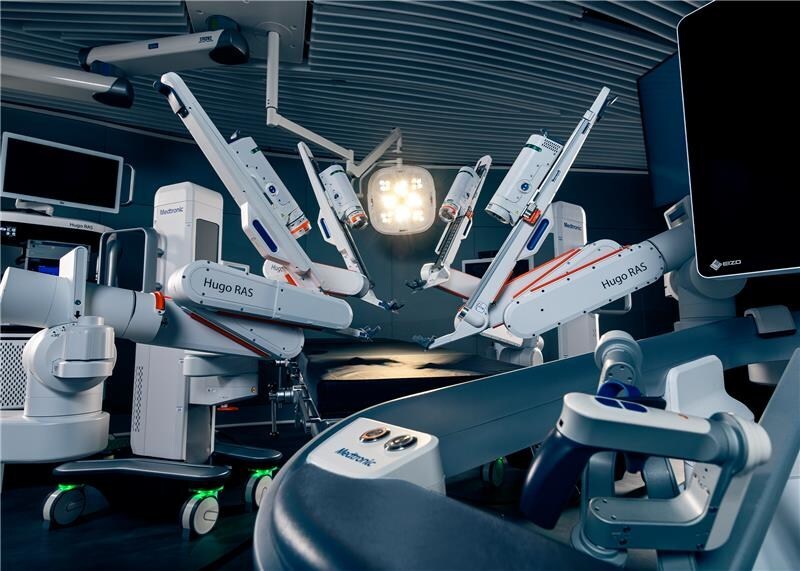A new multi-center study conducted by researchers in the Developmental-Behavioral Pediatrics Research Network (DBPNet) led by Children’s Hospital of Philadelphia (CHOP) looked at the effectiveness and side effects of stimulants like methylphenidate (Ritalin) and alpha-adrenergic agonists like guanfacine (Tenex) in preschool-age children with attention-deficit/hyperactivity disorder (ADHD). The retrospective study, published in the journal JAMA, found that both classes of drugs offered benefits, but they also had differing side effects.
The large-scale study is the first of its kind to compare ADHD drugs in preschoolers. The study involved retrospective analyses of the health records of 497 children with ADHD, with results showing that kids who were prescribed either a stimulant or an α2-adrenergic agonist experienced an improvement in their condition.
The study was published on May 4. May is Mental Health Awareness Month during which time the focus is on shedding light on mental and behavioral health issues to help people living with various mental conditions and to help reduce the stigma associated with them.
ADHD is a mental health disorder characterized by symptoms of inattention, hyperactivity and impulsivity. ADHD is one of the most common mental health disorders affecting children; in the US, it is estimated that 8.4 percent of children have ADHD compared to 2.5 percent of adults, and approximately 2.4 percent of preschool-age children are diagnosed with the disorder.
According to the Centers of Disease Control and Prevention (CDC), older children with ADHD are at increased risk for mental, behavioral and emotional concerns and disorders, such as mood and behavior disorders, substance abuse, risky sexual behavior and even suicide. If left unaddressed, these risks can lead to injury, disease or premature death.
Related: Flow Acquires Halo Neuroscience to Develop Brain Stimulation Technology to Treat Depression
Conventional treatment for ADHD in preschoolers involves behavioral therapy, which includes training for parents and medications. For children younger than the age of six, the CDC recommends behavioral therapy as the first line of treatment before the administration of drugs, as young children experience more side effects from ADHD medications than older children.
Among drugs for ADHD in preschoolers, stimulants are recommended as first-line medication treatment. However, up to 25 percent of preschool-age children with ADHD are treated with α2-adrenergic agonist medications, despite minimal evidence for their efficacy or adverse effects in this age range, say the authors of the CHOP study. This prompted the investigators to evaluate the effectiveness and side effects of stimulants versus α2-adrenergic agonists.
CHOP Study: Stimulants Versus Alpha-Adrenergic Agonists for ADHD in Preschoolers
The study involved evaluation of the electronic health records of 497 children seen at seven DBPNet outpatient developmental-behavioral pediatric practices between January 2013 and July 2017 to assess the use, effectiveness and side effects of stimulants and alpha-adrenergic agonists in preschoolers. The children included in the study were under the age of six when first treated with an α2-adrenergic agonist or stimulant, and 82 percent of the children were male.
The researchers found that 175 children (35 percent) were prescribed an α2-adrenergic agonist like guanfacine compared to 322 children (65 percent) who were given a stimulant, like methylphenidate (Ritalin). While both groups experienced improvements in symptoms, there was a slightly larger benefit among those prescribed stimulants (78 percent versus 66 percent).
In terms of side effects, patients taking α2-adrenergic agonists reported fewer side effects than those taking stimulants. Children on the α2-adrenergic agonists had lower rates of moodiness/irritability, appetite suppression and difficulty sleeping. Daytime sleepiness was the only adverse effect that was found to be higher in those taking the α2-adrenergic agonists than those taking stimulants.
“This is really the first study of any size to report on the frequency of improvement and side effects of drugs like guanfacine in preschool-age children,” said senior author Nathan J. Blum, MD, chief of the Division of Developmental and Behavioral Pediatrics at CHOP in a statement from the center. “While this study confirms that clinicians are using drugs like guanfacine in preschoolers and that those drugs may be useful in some children, the research also strongly suggests we need future research to look in a rigorous way at the use of alpha-adrenergic agonists in this age group.”
The investigators also found children younger than four years old who were prescribed a drug like guanfacine were likely to continue using the medication for longer than if they were prescribed a stimulant. However, children who were five years of age to younger than six that were prescribed a stimulant were likely to continue using it for longer than an alpha-adrenergic agonist; there was no significant difference between continued use of either medication among children between the ages of four and five.
“Although the retrospective nature of our study means we weren’t able to tell why patients stopped a given medication rather than continued with it, these data support potentially tailoring medication based on a child’s age, among other personal factors that might influence medication decisions,” Blum said. “Future research should seek to learn more about the use of these classes of drugs in preschool-age children so that we can prescribe the most effective therapy for each patient.”
ADHD Drugs in Children
Over medicating with, and abuse of, stimulants like Ritalin has been a growing problem among older children. Recently, the US Food and Drug Administration (FDA) approved Supernus Pharmaceuticals’ non-stimulant drug Qelbree (viloxazine) for the treatment of ADHD in children between the ages of six and 17. It was the first new drug to be approved for ADHD in children in well over a decade.
While the drug is a selective norepinephrine reuptake inhibitor (NRI), it may also act as an antagonist of serotonin receptors. It was marketed as an antidepressant for more than two decades in Europe before being repurposed as an ADHD treatment in the US, having won FDA approval for use in children in early April of this year. However, the effects of Qelbree have not been studied in children younger than six yet.












Join or login to leave a comment
JOIN LOGIN